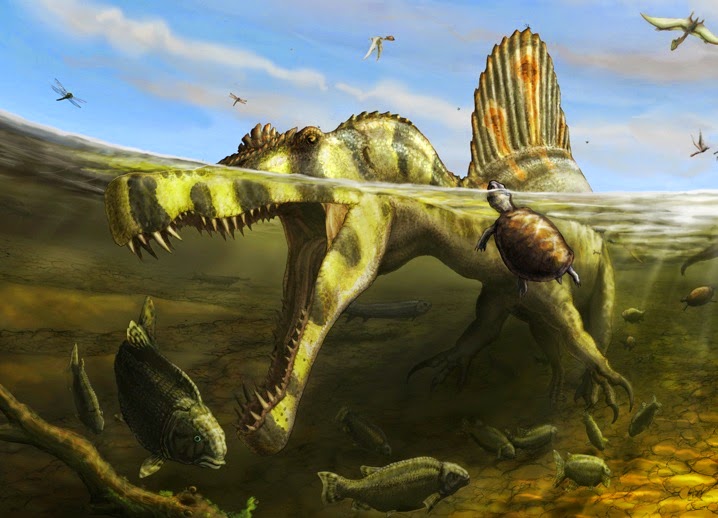Spinosaurus aegyptiacus is 10 feet / 3 meters longer than the Tyrannosaurus rex specimen. But Spinosaurus aegyptiacus stands as the first evidence to be recorded as the first semi-aquatic dinosaur. Till Spinosaurus evidence, Scientists had no proof about swimming dinosaurs. Even Paleontologists too had no fossil records that could approve the dinosaurs to be aquatic.
Going back to the history of Spinosaurus aegyptiacus: A German Paleontologist, Ernst Freiherr Stromer -Von Reichenbach has discovered Spinosaurus a century ago. Accordingly all the fossils pertaining to Spinosaurus were destroyed at the time of World War 2. But Scientists could go further lengths on finding a partial skeleton in the Moroccan Sahara, home to Sharks & predators. And the digital modeling skeleton throws more light on the total adaptive features that suit aquatic life:
- Starting from its tiny nostrils situated at far back on the middle of the dinosaur’s skull, assumed to be meant for breathing when the creature swammed on the surface.
- And the openings present at the end of the snout are treated as the reminiscent seen in crocodiles & alligators, but the same openings in modern animals function as house receptors which sense movement in the water.
- Huge, slanted, interlocking teeth show that they are meant to catch fish.
- Hood like claws appears to be ideal for holding slippery prey in waters.
- Big flat webbed feet seem to help in paddling water or stomping through mud.
- And the dense limb bones present would helps to be under water instead of floating.
- Long neck with legs & pelvis which appears as that of whales: makes it paddle than walk.
- Skull reconstruction of Spinosaurus aegyptiacus showed blue bones.
Scientists & Paleontologists aren’t exact about the movement of Spinosaurus land movement after leaving water for its breeding season of laying & nesting eggs. Paul Sereno, Chicago Paleontologist in a teleconference held by Science said that: “It was not a balancing, two-legged animal on land. It would have been something very peculiar. This isn’t to say that Spinosaurus wouldn’t have been an impressive sight on land. “It would have been a fearsome animal. There’s no question about it, you would not want to meet this animal on land,” Sereno said. “But it was not gallivanting across the landscape.”
A life size skeletal replica of Spinosaurus will be exhibited at the National Geographic Museum in Washington from September 12 to April 12.






















